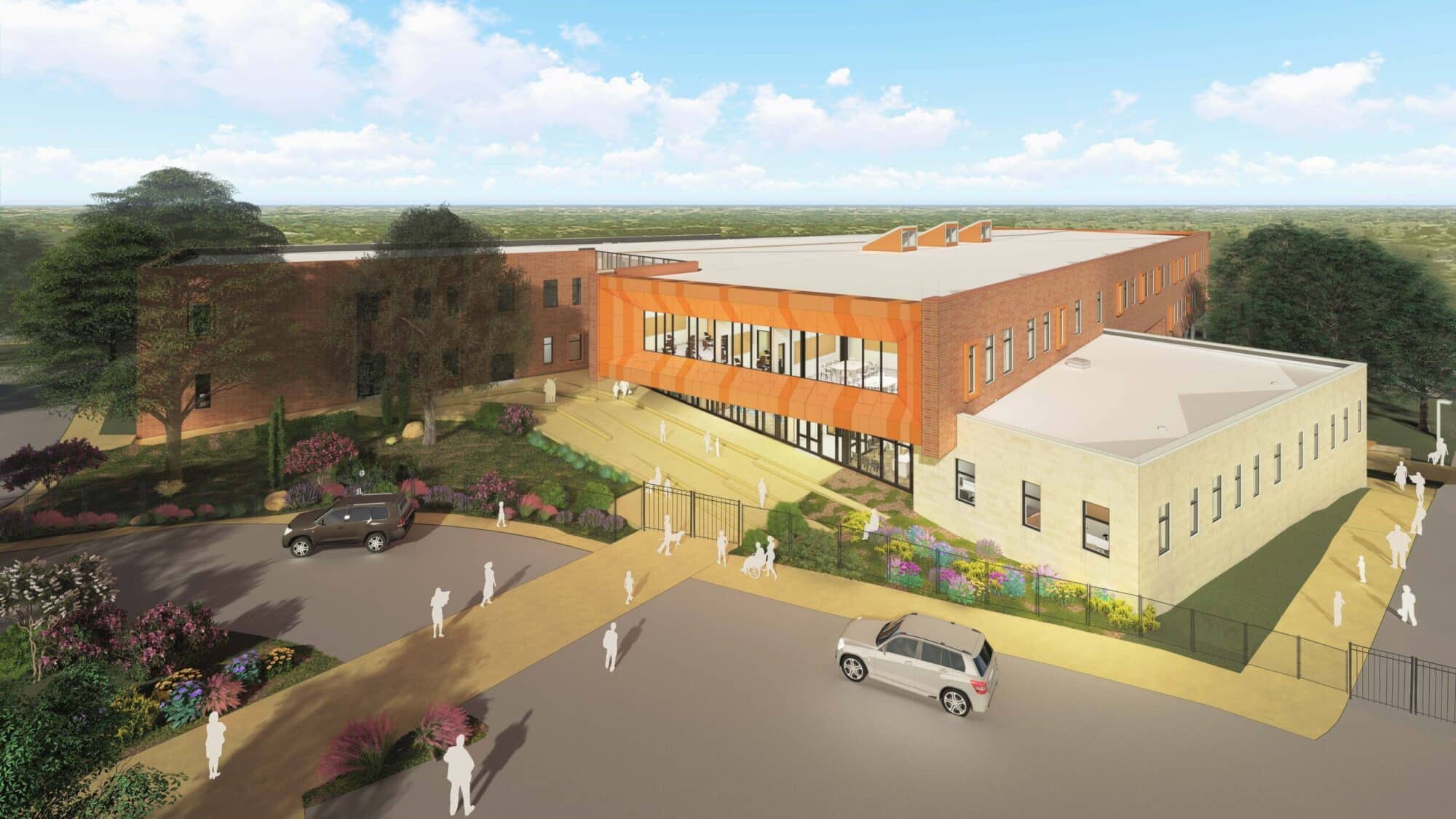JonesDBR is proud to be working with Stantec on the modernization of Doss Elementary School for Austin ISD. We are providing MEP engineering, LEED consulting, and Construction Administration services for renovations and additions to the existing campus, based around the new AISD educational specifications.
The modernization includes an expansion of the current building area from 61,102 square feet with an existing capacity of 543 students, to approximately 91,000 square feet with a new planned capacity of 870 students.
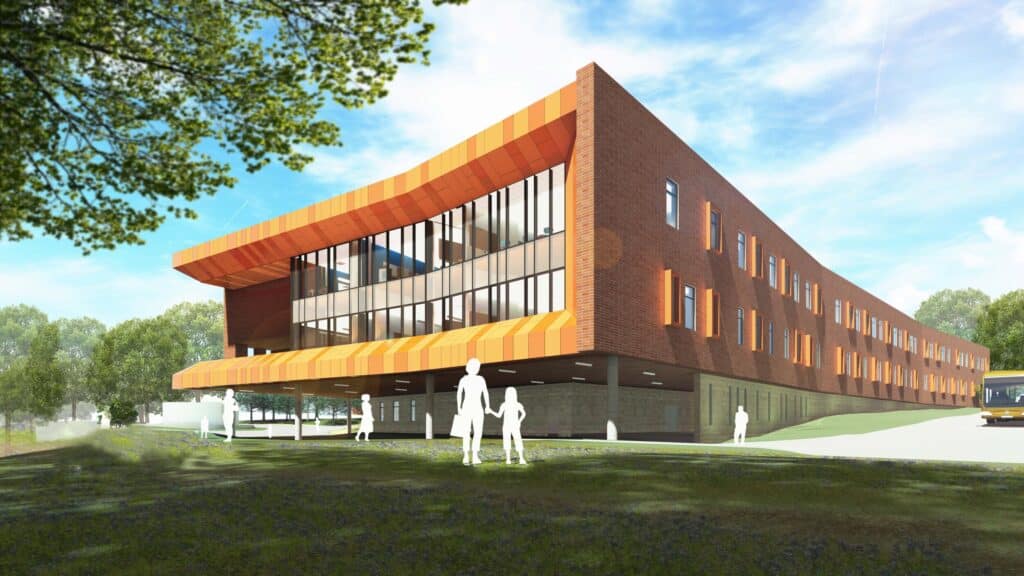
The project was designed with sustainability at the forefront of decision-making, with a goal to achieve a LEED Silver rating. Sustainable design features include measures to improve the impacts of the building on both occupants and the environment by enhancing the building’s performance in terms of site impact, water use, energy consumption, material use, and indoor environmental quality.
The interior design utilizes nature-inspired biophilic design in the interior environment which provides occupants with a similar feeling to being in nature. Some of these design features include botanical and animal design motifs, natural materials and colors, and simulation of natural features such as tree canopies in library and collaboration areas. Incorporating biophilic design elements in schools can offer benefits such as increased rates of learning, reduced stress levels, reduced impacts of ADHD, and improved test scores and concentration levels.
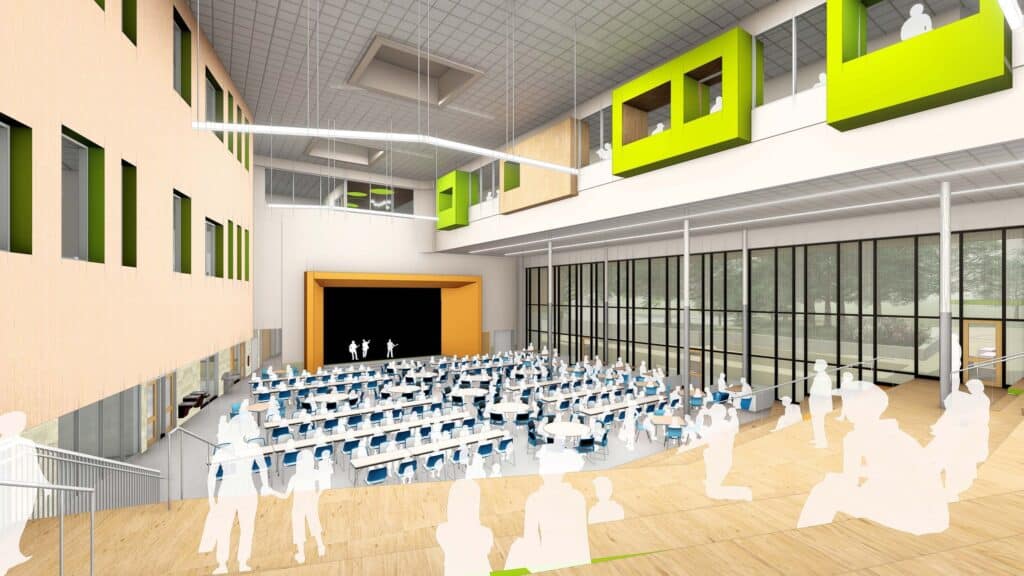
The school’s new roof meets the Austin Energy Green Building program solar readiness credit by maintaining over 50% of the area available for future solar panel installation and providing infrastructure to connect solar-generated power to the main electrical room. Site lighting was designed to limit light trespass at the property line and to minimize light pollution in the night sky in order to reduce the impact on wildlife and adjacent properties while maintaining a safe school campus environment.
Electric charging stations are designated for electric vehicles to promote alternatives from conventionally fueled automobiles and reduce pollution. The parking lot meets LEED EV charging station credit by providing infrastructure for (7) EV charging stations.
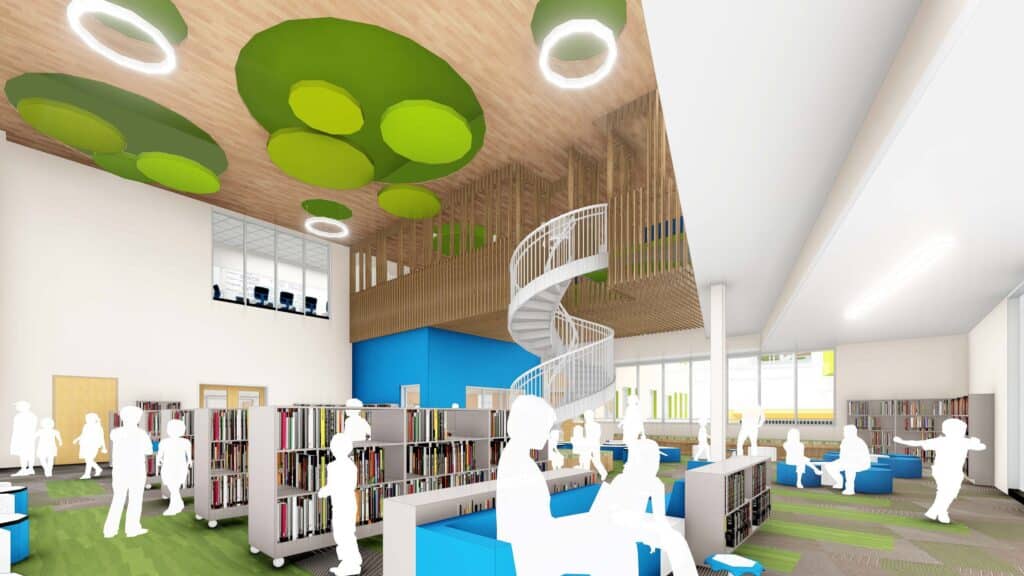
The project was designed with low-flow WaterSense approved plumbing fixtures to reduce the overall water consumption of the building. AISD has also committed to submetering certain systems such as domestic hot water and site irrigation to support water management and identify opportunities for additional savings by tracking consumption.
Minimizing energy usage of the building was a high priority, with energy modeling taking place throughout the design of the project, from early design to 100% CDs. Early modeling gave insight on the energy-saving potential from design strategies related to massing and orientation, lighting selections, and envelope attributes such as window-wall ratio, insulation values, and shading devices. Modeling was used to compare various HVAC and lighting strategies as well.
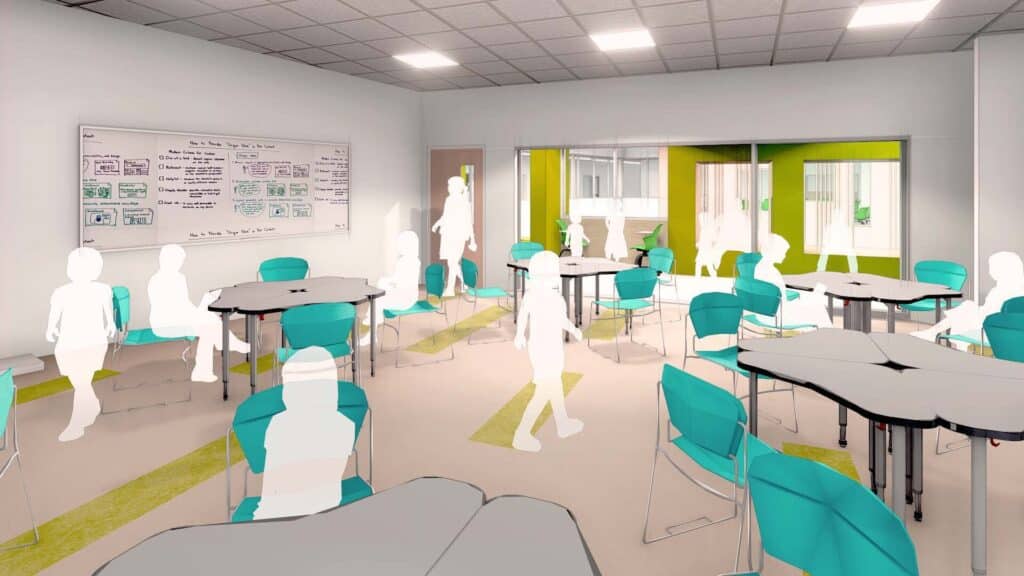
The heating and cooling for Doss Elementary are provided by two gas-fired condensing boilers and two air-cooled chillers. Air distribution to the main building is provided by eleven central station air handling units with VAV terminal units. Indoor environmental quality was a major design goal for the project, which led us to incorporate carbon dioxide monitoring, cross-contamination prevention measures, and MERV-13 filters for the mechanical equipment. These strategies, in combination with supplying an adequate supply of outdoor as specified by ASHRAE 62.1, result in an improved indoor air quality that promotes student and teacher comfort, well-being, and performance.
The electrical power distribution system was designed to allow for submetering for all end uses that are 10% or greater of the total energy consumption of the building to support energy management and help identify opportunities for additional energy saving. Meters provide reports of building energy usage back to the building automation system (BAS). The building automation system also has the infrastructure to be interconnected with Austin Energy’s demand response program, allowing the utility company to limit power use during peak demand periods via lighting and HVAC set points.
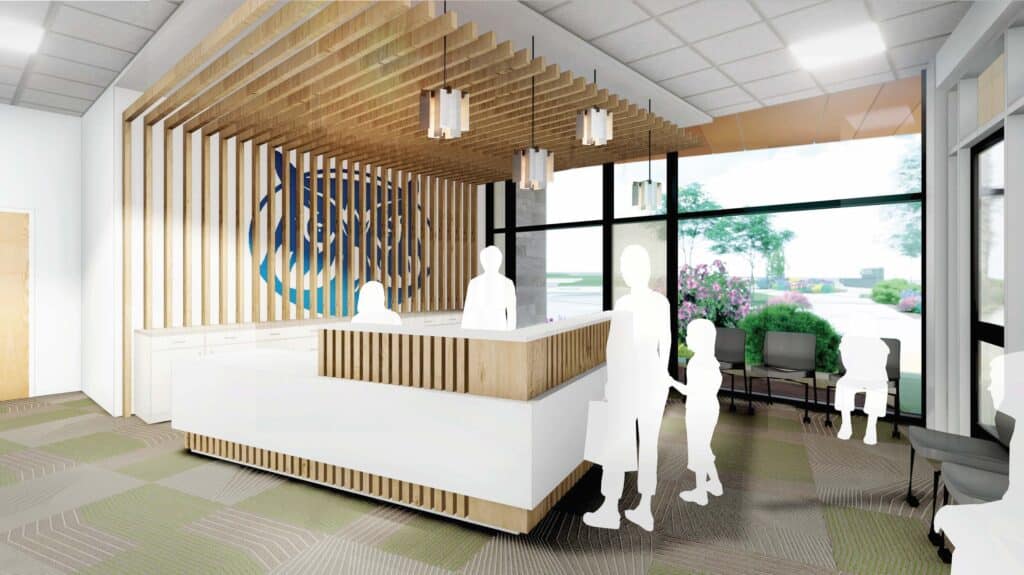
The entire facility has been provided with automatically controlled receptacles. The automatic receptacle controls are integrated with the lighting control system to provide 50% of receptacles with automatic control in rooms that are typically occupied.
The entire facility has been provided with LED lighting and controls to exceed ASHRAE 90.1 2016. The overall light power density is 0.58 W/ft2. The building lighting controls consist of vacancy sensors, astronomical timeclock, daylight sensors, and dimming controls. Corridors and public spaces are served by timeclocks with 2-hour override switches. Classrooms are provided with multiple, 2-3, dimming zones to serve the general class, teaching walls & daylighting zones. The exterior building and parking lot lighting will be controlled via timeclock with 2-hour override switches.
In addition to the sustainable design measures and the expansion of the campus, other improvements to the facility include fire alarm and intrusion detection upgrades and security camera replacements. Enhancement of the information technology infrastructure was also a major focus of the project.
